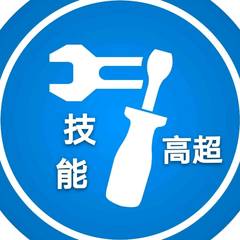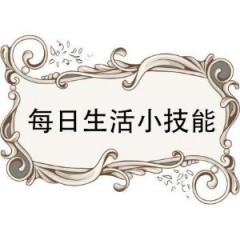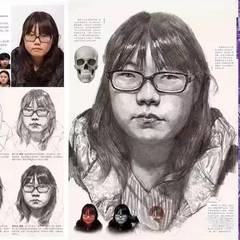什么是汤加潘加
ISO 4217 Code:TOP
User(s):Tonga
Inflation:
11.1%
Source:The World Factbook, 2005 est.
Superunit:
100 hau
Subunit:
1/100 seniti
Symbol:T$ (sometimes PT)
seniti:¢
Coins:
Freq. used:5¢, 10¢, 20¢, 50¢
Rarely used:
1¢, 2¢
Banknotes:T$1, T$2, T$5, T$10, T$20, T$50
Central bank:National Reserve Bank of Tonga
Website:http://www.reservebank.to
The paʻanga is the currency of the Kingdom of Tonga. It is controlled by National Reserve Bank of Tonga (Pangikē Pule Fakafonua ʻo Tonga) in Nukuʻalofa. The paʻanga is not convertible and is pegged to a basket of currencies comprising the Australian, New Zealand, and United States dollars and the Japanese yen.
One paʻanga equals one hundred seniti, the ISO code is TOP and the usual abbreviation is T$ (¢ for seniti). In Tonga the paʻanga is often referred to in English just as dollar and the seniti as cent. There is also the unit of hau (1 hau = 100 paʻanga), but this is not used in every day life and can only be found on commemorative coins of higher denominations.
Etymology
Entada scandens, native name paʻanga, is a bean-like vine producing large pods with large reddish brown seeds. The seeds are roundish, up to 5 cm diameter and 1 or 2 cm thick. When strung together they are used as anklets, part of the kailao dance costume. They were also used as playing pieces in an ancient disc-throwing game, lafo.
On 1 December 1806 Tongans attacked the passing ship Port-au-Prince in order to take it over. They failed, as the crew sank the vessel. The chief of Haʻapai, Fīnau ʻUlukālala, resorted to the next plan, plunder what ever was worthwhile. On his inspection tour he found the ship's cash. Not knowing what money was he considered the coins as paʻanga. Finally, not seeing anything of value, he ordered the remains of the ship to be burned. It was much later that William Mariner, the only survivor of this attack, told him that those pieces of metal were of great value and not merely playing stones.
When Tonga introduced decimal currency, it decided not to call the main unit the dollar because the native word, tola, translated into a pig's snout, the soft end of a coconut, or, in vulgar language, a mouth. Pa'anga, on the other hand, translated into money.
Mariner also passed down the following statement of Fīnau ʻUlukālala:
If money were made of iron and could be converted into knives, axes and chisels there would be some sense in placing a value on it; but as it is, I see none. If a man has more yams than he wants, let him exchange some of them away for pork. Certainly money is much handier and more convenient but then, as it will not spoil by being kept, people will store it up instead of sharing it out as a chief ought to do, and thus become selfish. I understand now very well what it is that makes the papālangi so selfish — it is this money!
History
The paʻanga was introduced on 3 April 1967. It replaced the pound at a rate of 1 pound = 2 paʻanga. Until 11 February 1991 the pa'anga was pegged to the Australian dollar at par. Since that time a basket of currencies is taken (see above), and the paʻanga has continuously declined. As in 2006, one needs about T$1.60 to get 1 Australian dollar. Official exchange rates are released daily by the National Reserve Bank, established 1 July 1989, but rather towards the end of the day than early in the morning. In practice, it seems, that the real exchange rate is rather determined by the fancy of the higher echelons than the basket.
Coins
Coins come in denominations of one, two, five, ten, twenty and fifty seniti. Most coins feature the king in military uniform in front looking forwards and the writing Fakalahi meʻakai (Tongan, "Grow more food") with a food plant in the back. A specialty is the dodecagonal 50¢ coin (all other coins are round). The one and two seniti coins are becoming less common nowadays, as they loose value due to a yearly inflation of about 10%, and are only readily available for some months after a release by the bank. Total prices in shops are usually rounded to the nearest 5 or 10 seniti. Some shops believing that to round means always to round up.
In former times there were also some T$1,T$2 and T$3 coins circulating, but these are now considered to be collector's items.
As late as 1967 (she died in 1965) Queen Salote Tupou III looking to the right, appeared on the coins instead of the current king, who, on the coins before 1980, was looking to the left.
Banknotes
Bank notes come in denominations of 1, 2, 5, 10, 20, and 50 paʻanga. The latter was introduced around 1990. The turquoise, half paʻanga note, featuring copra making on the back, was discontinued around 1980.
The obverse of the notes is held in Tongan language and shows the portrait of King Taufa'ahau Tupou IV. The reverse is in English language and shows typical motives and landmarks of Tonga: the Haʻamonga ʻa Maui Trilithon, the royal palace, the Tongan Development Bank, the Port of Vavaʻu (twice, once as it was around 1900, and the other contemporary), and ngatu making.
汤加潘加纸币
汤加潘加铸币
猜你喜欢内容
-
什么是风险性决策
在财经领域,风险性决策是一种常见但又充满挑战的决策方式。风险性决策指的是在决策过程中,存在多种可...
-
商业险需要什么手续
在如今的社会经济环境中,商业险作为一种重要的风险保障手段,受到了越来越多人的关注。然而,办理商业...
-
没指标是什么意思
例如,在股票投资中,可能指没有特定的技术分析指标来辅助判断股票的走势;在基金投资中,可能意味着没...
-
什么是时点存款
在金融世界中,时点存款是一个具有特定含义和特点的概念。时点存款,简单来说,是指在某个特定时间点上...
-
南方现金通e的特点是什么
南方现金通 e 作为一款在基金市场上备受关注的产品,具有一系列显著的特点,这些特点在理财规划中展现出...
-
什么是产品的品种
在财经领域中,产品的品种是一个重要的概念。简单来说,产品品种指的是具有特定特征和属性的一类产品。...
-
货币资金的管理方法有哪些
货币资金作为企业资产的重要组成部分,其管理的有效性直接影响着企业的运营和发展。合理的货币资金管理...
-
几内亚的货币是什么
几内亚共和国,位于西非西岸,是一个资源丰富但经济发展面临诸多挑战的国家。其法定货币是几内亚法郎。...
-
应收据的定义是什么
在财务管理领域,应收据是一种常见且重要的金融工具。应收据,简单来说,是由付款人或受票人签发,由收...
-
L型经济压力线的含义是什么
在经济领域中,“L 型经济压力线”是一个备受关注的概念。简单来说,L 型经济压力线描述的是经济增长在...






























